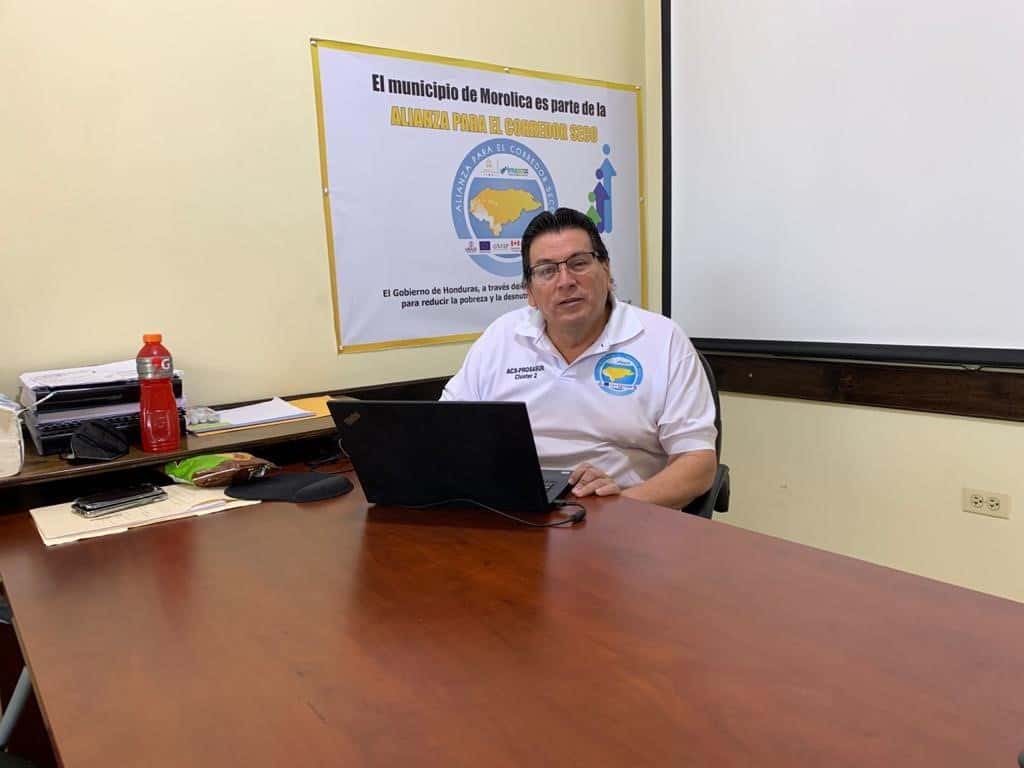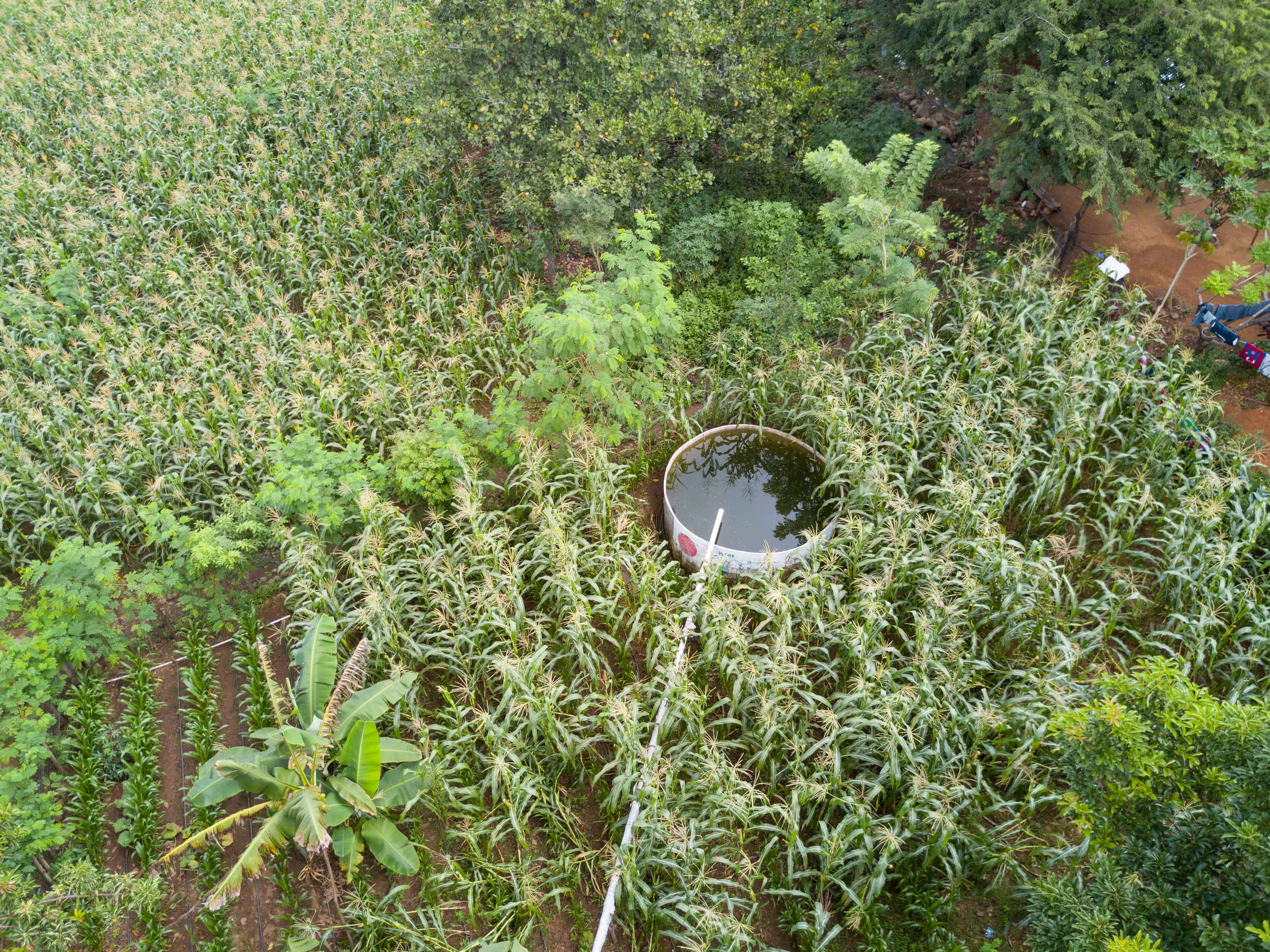Funded by both the World Bank and the Honduras Strategic Investment Office (INVEST-H), ACS-PROSASUR is part of the broader Dry Corridor Alliance project. The project addresses water scarcity, hygiene, child under-nutrition and rural livelihoods, aiming to lift 50,000 families out of extreme poverty by improving agricultural growing practices, offering health education and business support, among other techniques. Creative implements programs in 12 municipalities in the departments of Choluteca y El Paraíso, working with 6,000 families.
In this Q&A, ACS-PROSASUR’s Chief of Party Jorge Lainez draws on his experience working in the agricultural and economic development spaces to assess the project’s impact and what can be emulated in future work.
This interview was conducted in Spanish, translated to English and has been edited for length and clarity.
Question: Working in the Dry Corridor brings complex challenges, with high levels of poverty compounded by climate change. What makes the challenges different from other projects you’ve worked on?
Jorge Lainez: The impoverished conditions of these families are a mix of several factors. The main one is the lack of access to capital and assets, like land, water and money for investment. Also, Honduras is located in a high-risk zone for climatic events. We saw this most recently during the Hurricane Eta and Tropical Storm Iota. The Dry Corridor is one the driest part of Central America. A family with no land or water must rent land to sow their crops. They need to schedule their crops in stages to account for the dry zones. They’re more exposed to these climate impacts.
The rainy seasons are so random. They have an intense rainy season, but the distribution of this rain is focused during a short period of time, meaning it rains heavily only a few times a year. And that causes [flooding and] farmers to lose a lot of their crops. So, the families become even more susceptible to falling into cycles of poverty.

Question: In your position, what are the biggest challenges that you’ve faced in your job? And what are the most important improvements seen since leading this project?
Lainez: Timing is the main challenge. If the assistance arrives after the crop cycle, many investments won’t be utilized. I’m talking about the times when we bring fertilizers or other agricultural inputs. Everything needs to be accurate and happen at the right time.
But we’ve had some good results. For example, we’ve been working hard to install irrigation systems. These are small irrigation systems, or micro irrigation, but they can cover up to 350 irrigated hectares. So, if there’s no rain, we use that irrigation system so the crops survive and these families have a harvest.
With Component 2, which relates to nutrition and household health, we also have a strategy mainly focusing on women as the heads of households, as well as offering guidance to parents with kids 5 years and younger. We have a program that measures their size and weight between 0 and 2 years old. This monitoring has given very good results in improving children’s nutrition levels, the diversity of their diet and better welfare at home through engaging all the contacts and resources that we have in the towns.
Question: In your career, you’ve worked at the intersection of conservation and economic growth. What changes have you seen in this area over time? And what work is still needed in places like the Dry Corridor to incorporate environmental sustainability in agricultural development projects?
Lainez: Yes, I’ve worked in complex projects that incorporated environmental, social and financial impacts. It’s important to have those three areas in all activities, goals and impacts because you can’t get one without the others.
For the project ACS-PROSASUR, part of the broader Dry Corridor Alliance project, which deals mainly in food security and improving [agricultural] operations and household nutrition, we had to complement these initiatives with actions related to the environment. For example, if we’re working with irrigation systems, water harvesting and micro irrigation systems, we have to also take into account the sustainability of those investments. For example, we can have irrigation systems, but we have to make sure that the water that we use for the micro irrigation systems is protected and managed. So here I’m talking about managing natural resources, and mainly water.

Question: And knowing that – as you said – the Dry Corridor is a zone where the challenges of climate change are really felt by the people living there, what are some of the more impactful interventions seen in the project? Could they be replicated or adapted in different parts of the country?
Lainez: Yes. Again, a big impact we have seen is with working with water harvesting, preserving that water and installing irrigation systems. So first, the irrigation systems offsetting the rainy period in both growing cycles [have made a difference]. Because there are two crop cycles in Honduras, there are two opportunities for growing crops. The families who have two crops are better able to ensure they have enough to eat and to sell. Installing irrigation systems is related to the financial growth because we ensure the crops make it to the end of the production cycle.
Second, training people how to manage their crops by applying better inputs, better practices and improved agricultural technologies has made a huge difference. That ensures that the producer has access to resources to be successful and reduces risk of losing crops. And when they start having surplus harvest, we have to work with them with the next step, which is marketing their produce. We do this mainly by helping them form agricultural businesses plans that emphasize the concept of the value chain, connecting the farmer to the supply line of the crop he or she is producing.
Looking ahead, we’re moving forward with some ideas that we have about working in irrigation systems with solar energy. By working in irrigation systems with solar energy we can more appropriately use the resources such as the renewable energy, the sun and through solar panels, we can cover a bigger area. For example, we’re thinking on doing pilot projects running irrigation systems with solar energy. With these pilot projects we can gain the experience to spread to other areas.
Question: Unemployment and the insecurity are driving factors for migration in Honduras and in the Dry Corridor. How does the project indirectly address this phenomenon through implementing good agricultural practices and trying to increase livelihoods?
Lainez: Yes. Migration is always a problem in these countries, especially in Honduras. If we’re able to decrease poverty levels with the project, or improve household income through technical assistance and the investments that we’re making with the families in their livelihoods, there can be no doubt that it will counter the trend to migrate. But there are some actions which stand out. For instance, we target involving youth and women in our development projects with the micro enterprises.
One of the non-agricultural projects I see that has great potential in the zone, and which hasn’t yet been developed, is tourism. Soon we’ll implement two tourism projects, which I think will give very good results, and which have a strong attraction with youth and women. Creating jobs, generating better sales of people’s products, and encouraging a better organizational network in and among the families, I think that can significantly impact migration.
Feature image by Skip Brown.


